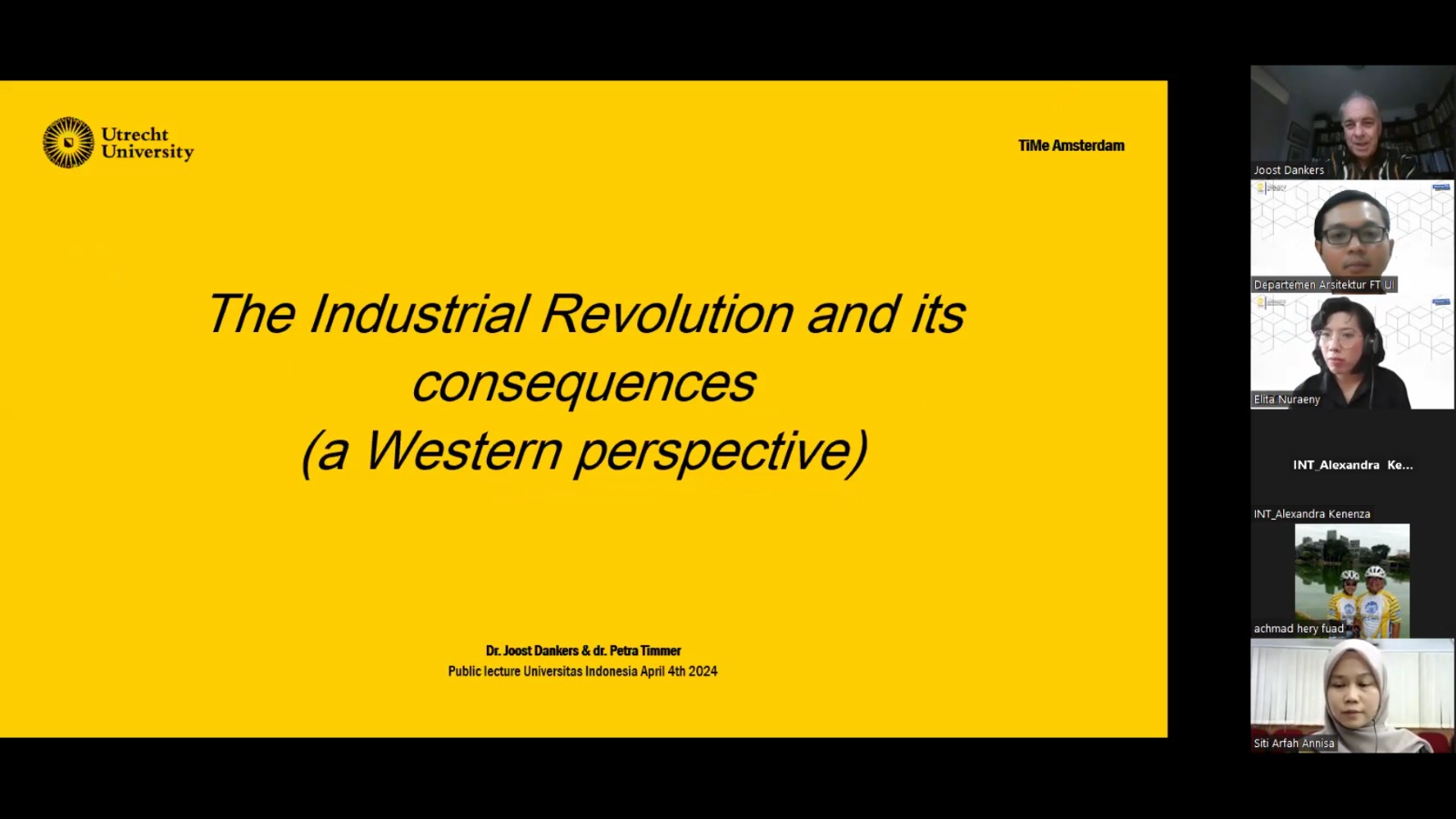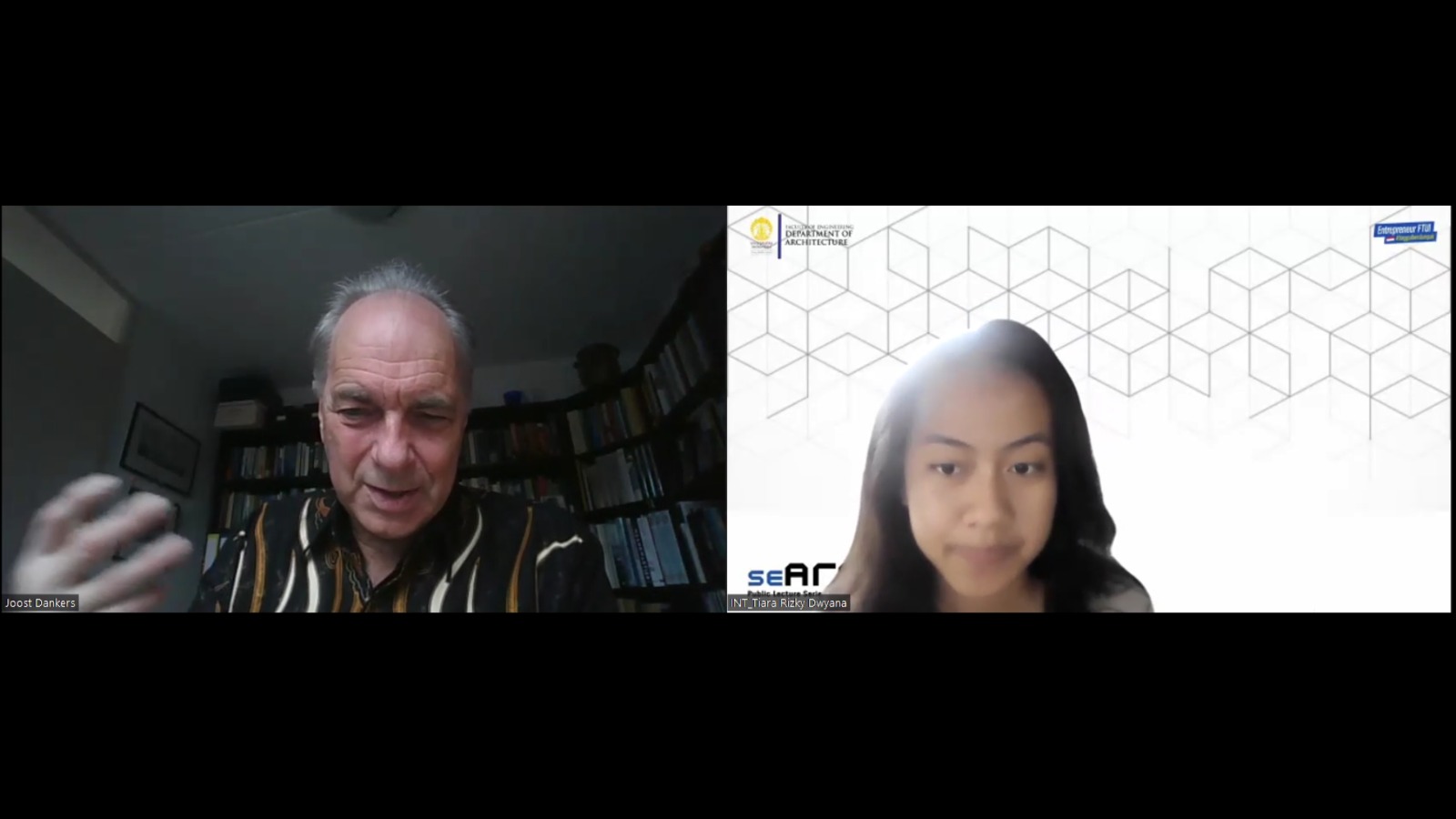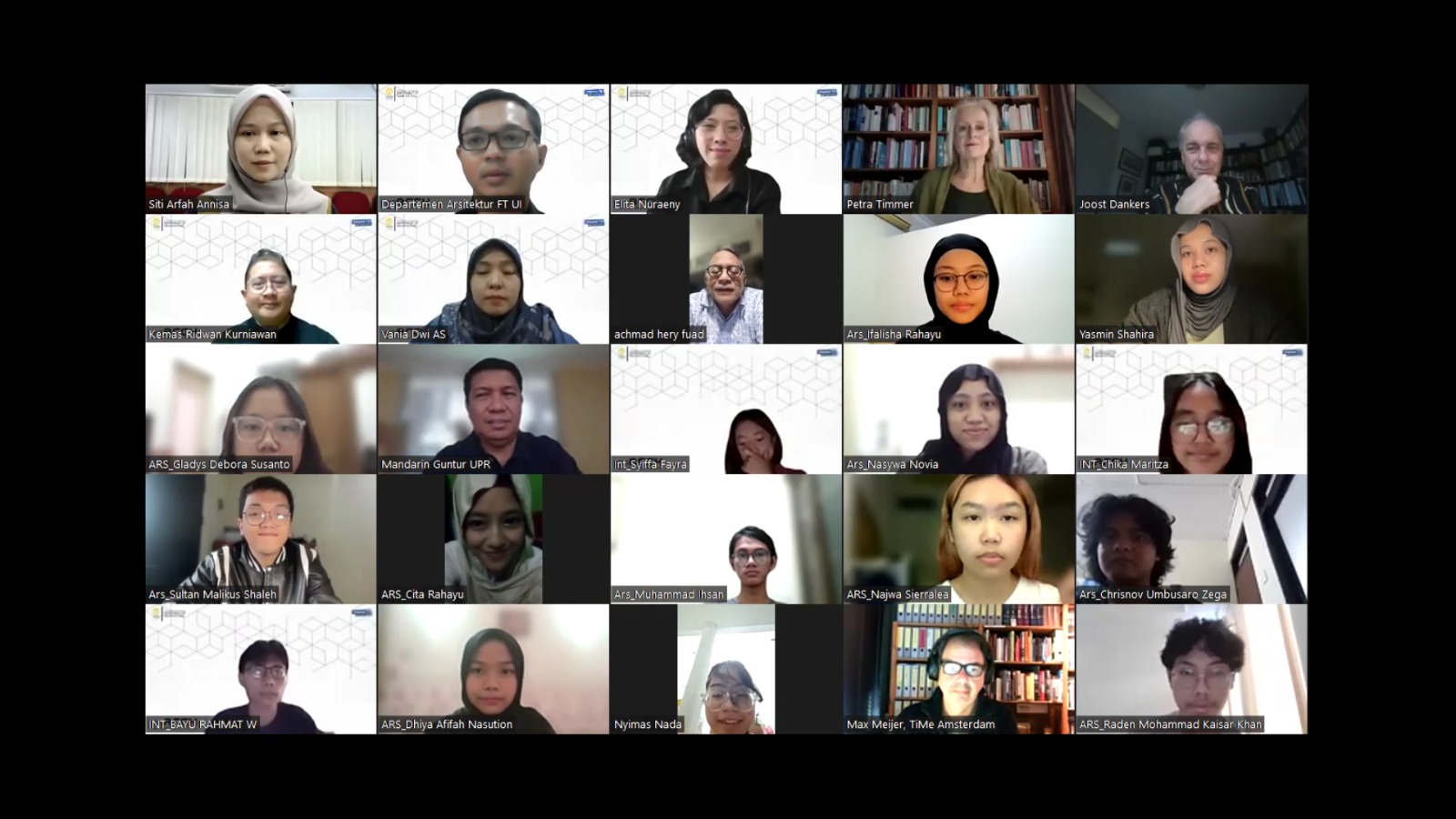On Thursday (4/4), the Architecture Study Program, Department of Architecture, Faculty of Engineering, Universitas Indonesia (FTUI) invited a guest lecturer from Utrecht University, Dr. Joost Dankers. He delivered a lecture titled “Industrial Revolution & Modern Architecture in the Netherlands (1870-1940).” The lecture was conducted online via Zoom Meeting with participants from the History and Theory course. This lecture was the first in a series of seARCH (Public Lecture Series on Architecture).
Dr. Ir. Achmad Hery Fuad, M.Eng., Chair of the Department of Architecture FTUI, expressed his gratitude in his opening remarks, saying, “Thank you to Dr. Joost Dankers and Dr. Petra Timmer for the opportunity to give this lecture today. Hopefully, this lecture will provide valuable insights into the world of architecture, especially modern architecture in the Netherlands.”
At the beginning of the lecture, Joost provided an overview of the topics to be covered, including the effects of industrialization on buildings and the environment, as well as the background to the style and development of modern architecture.
“The Industrial Revolution began in the 1780s in Great Britain, where the defining innovation was the steam engine. Steam power spread from mining to the textile and machinery industries. The industrial revolution has four characteristics, including mass production, mass consumption, globalization, and linear production,” explained Joost.
During its course, the Industrial Revolution saw a surge in technological advancements. The first was the emergence of new infrastructure, such as canals and waterways, hydroelectric power plants, and highways. The innovation of the steam engine brought about the railroad due to the creation of trains. In civil engineering, there were also advancements in cheap steel and concrete technology. Next came mass-produced vehicles. And most recently, the development of information and telecommunication technology. From these developments, several consequences emerged, including new political movements, new scientific attitudes and global exchanges, and the potential for new technologies that influenced architecture.
“New techniques and methods of production have had a significant influence on the methods and possibilities of development within the Modernism movement, ranging from Rationalism, Constructivism, Expressionism to Functionalism,” Joost explained.
FTUI Dean, Prof. Dr. Ir. Heri Hermansyah, S.T., M.Eng., IPU, said, “I would like to thank Dr. Joost Dankers for his willingness to share his knowledge with our students. With the hosting of this guest lecture, I hope that brilliant ideas from our students can emerge and be realized so that our students can contribute to building our country, especially in the field of architecture.”
Joost Dankers is a historian and researcher. By translating research tasks from society into historical research and by initiating research projects, he facilitates the transfer of knowledge and the social impact of the Humanities. He currently supervises research commissioned by The Teutonic Order, Nyenrode Business University, the municipality of Hilversum, and the Dutch metallurgy sector business interest organization, Royal Metaalunie.
***
Office of Public Communication
Faculty of Engineering, Universitas Indonesia




